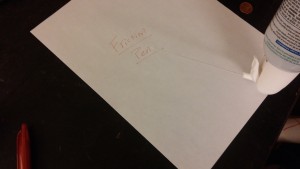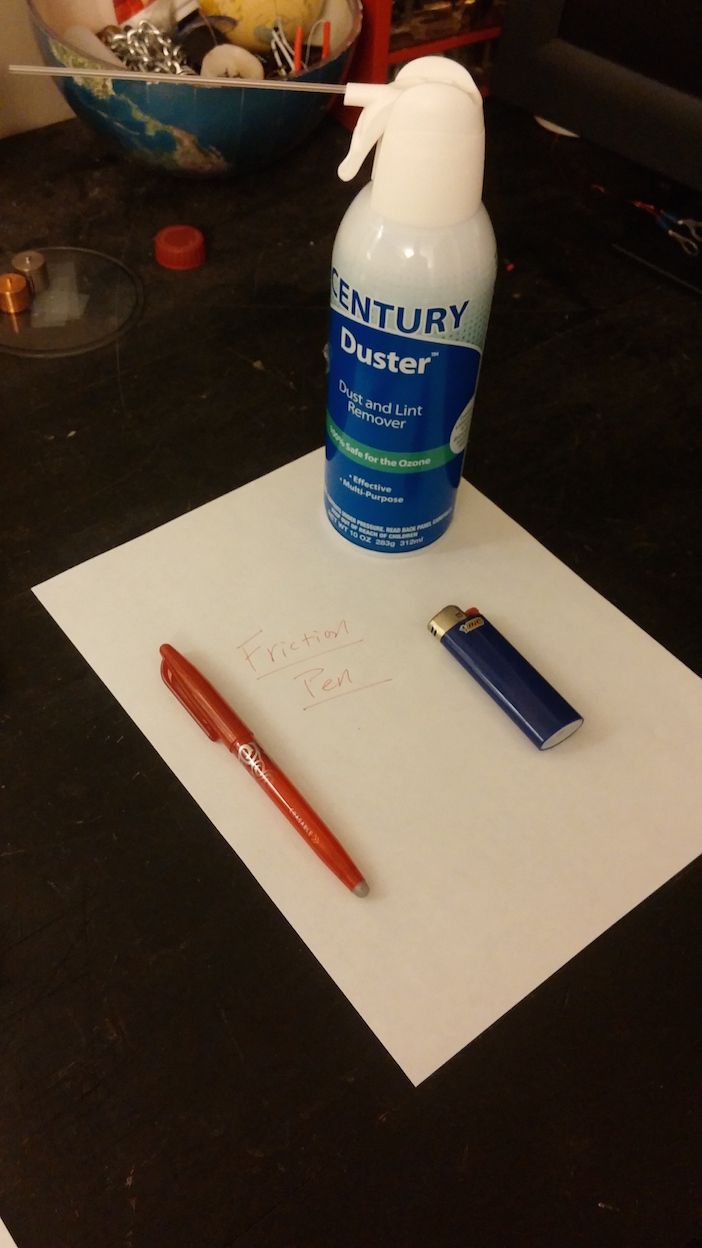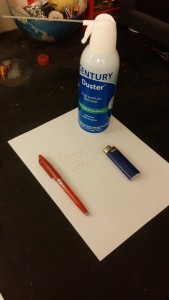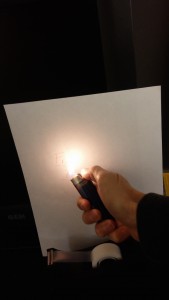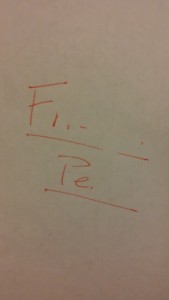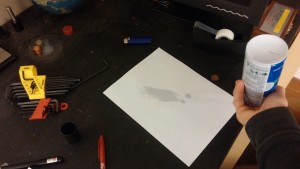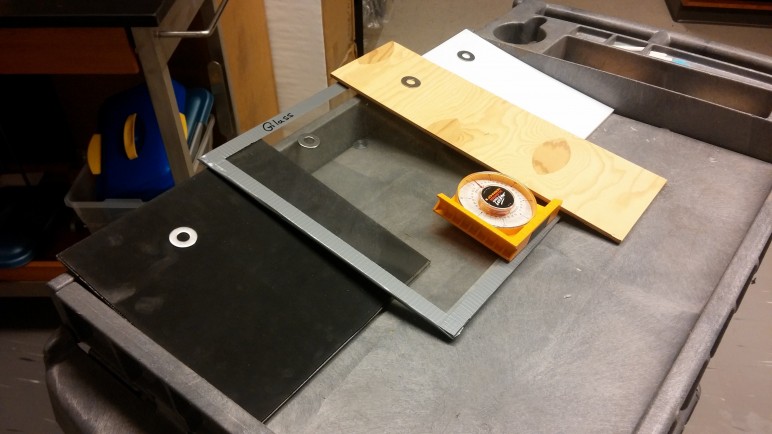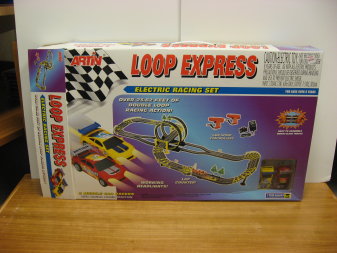Heat of friction causes ink in “Frixion” erasable pens to disappear.
Ink reappears when exposed to cold temperatures.
Use lighter for high temp. (Be careful not to burn paper. Just wave flame in front of paper until ink disappears)
Use liquid from compressed air to achieve cold temperatures. (Invert can and spray. Be careful not to get liquid on skin. Extremely cold.)
